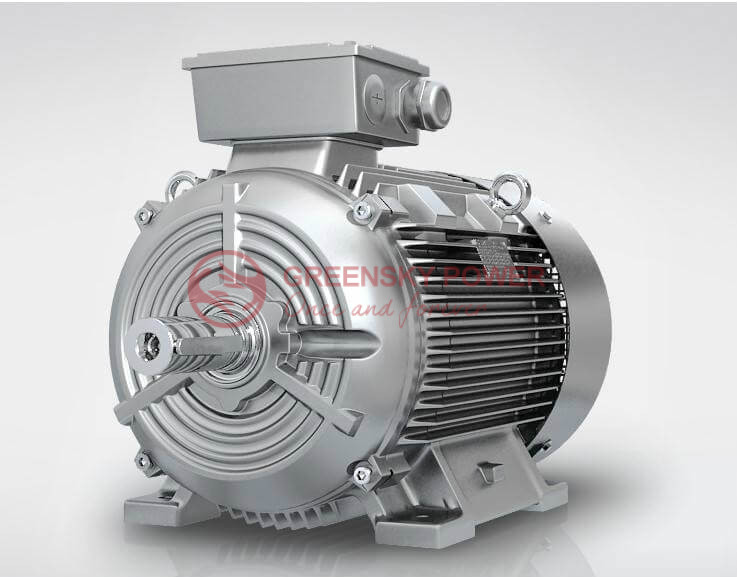What makes a high efficiency motor more efficient?
An electric motor is a device that transforms electrical energy into mechanical energy. The efficiency value of a motor is the percentage of electrical energy that is converted into mechanical energy. Typically, 70% to 95% of the absorbed electrical energy is transformed into mechanical energy, and the remaining 5% to 30% is lost due to heat and mechanical loss. This is an essential technical index of a motor.
A high-efficiency motor is one that has a high rate of electric energy utilization. These motors are often referred to as “high efficiency motors.” However, increasing the efficiency of an ordinary motor by even 1% can be difficult and costly due to the need for additional materials. After a certain efficiency threshold is reached, adding more materials cannot improve the motor’s performance. Currently, most high efficiency motors available on the market are replacement products for three-phase asynchronous motors, which means that their basic operating principles remain the same.

High-efficiency motors improve the efficiency of motors through several ways, including:
Reduced losses: High efficiency motors have reduced losses, which can be achieved by reducing the resistance of the windings, using high-quality magnetic materials, and improving the design of the rotor and stator.
Improved design: High efficiency motors have improved designs that optimize the magnetic circuit, reduce the air gap, and minimize the flux leakage, which results in lower losses and higher efficiency.
Better insulation: High efficiency motors use better insulation materials and techniques to reduce the losses due to eddy currents and hysteresis.
Higher-quality bearings: High efficiency motors use higher-quality bearings that have lower friction losses and require less lubrication.
Use of frequency inverters: High-efficiency motors can be used in conjunction with frequency inverters that adjust the frequency of the power supply to match the load, resulting in lower energy consumption.

There are several energy-saving measures for high-efficiency motors, including:
1.Implement variable speed drives (VSDs): VSDs can be used with high-efficiency motors to control the speed of the motor based on the load demand. This can reduce energy consumption by up to 60%, especially in applications where the load varies.
2.Optimize motor sizing: Selecting the right size motor for the application can improve energy efficiency. Oversized motors can consume more energy than necessary, while undersized motors can cause increased wear and tear.
3.Improve motor maintenance: Proper maintenance can ensure that motors operate at peak efficiency. This includes regular cleaning, lubrication, and alignment, as well as monitoring for signs of wear and tear.
4.Use energy-efficient components: Energy-efficient components such as V-belts, pulleys, and couplings can reduce energy losses in motor-driven systems.
5.Implement energy management systems (EMS): An EMS can monitor and optimize energy consumption throughout a facility, including motor-driven systems. This can identify areas where energy savings can be achieved and help to prioritize energy-saving measures.

The characteristics of high-efficiency motors are:
Higher efficiency: High efficiency motors have a higher efficiency rating than standard motors, which means that they convert more of the electrical input power into useful mechanical output power. This results in lower energy consumption and reduced operating costs.
Lower energy losses: High-efficiency motors have reduced energy losses due to improved design, better materials, and optimized magnetic circuits. This can result in energy savings of up to 50% compared to standard motors.
Better insulation: High-efficiency motors use better insulation materials and techniques to reduce energy losses due to eddy currents and hysteresis.
Reduced noise and vibration: High-efficiency motors are designed to minimize noise and vibration, resulting in quieter and smoother operation.
Longer lifespan: High-efficiency motors have a longer lifespan than standard motors due to improved materials, better insulation, and reduced wear and tear.
Reduced environmental impact: High-efficiency motors consume less energy, which reduces greenhouse gas emissions and helps to protect the environment.
Overall, high-efficiency motors are designed to be more energy-efficient, reliable, and environmentally friendly than standard motors, making them a preferred choice for many industrial and commercial applications.
Greensky Power Co., Ltd. is a professional manufacturer engaged in the research, development, production, sale of high efficiency motors.
If you are searching high efficiency motor for your project, please contact our sales team.



